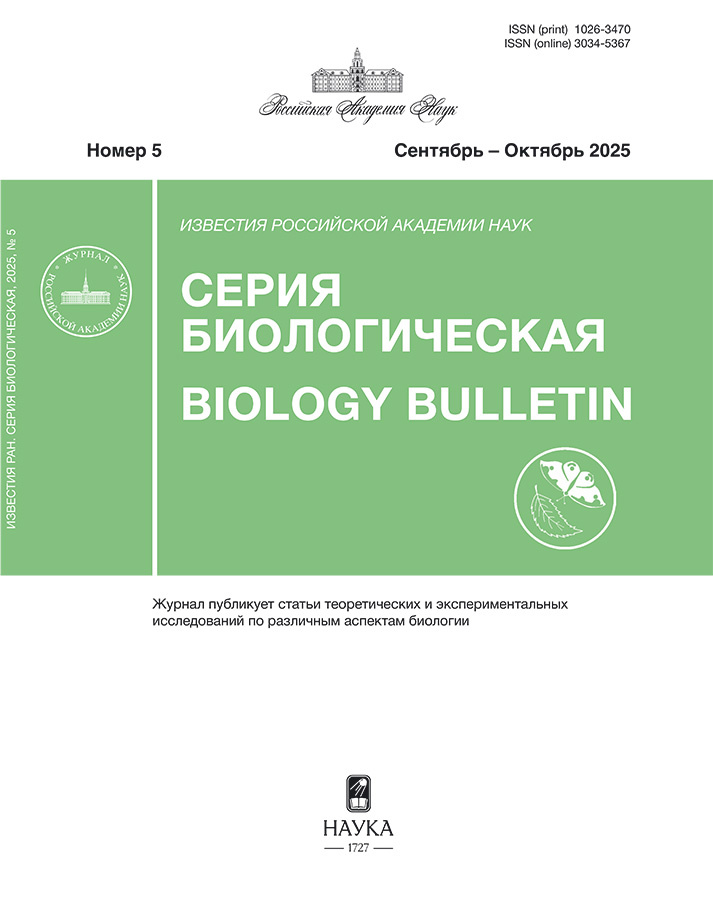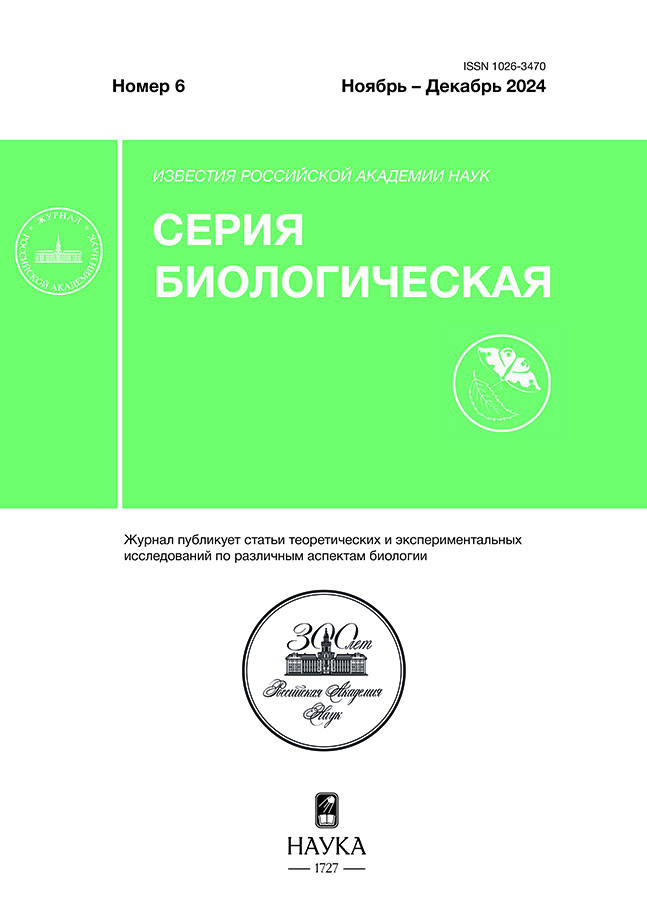Development and validation of a method for assessing individual behavioral characteristics of a domestic dog (Canis lupus familiaris) by online survey of owners
- Authors: Ganitskaya Y.V.1, Ever A.A.1, Gritsenko V.V.2, Feoktistova N.Y.1, Surov A.V.1
-
Affiliations:
- A.N. Severtsov Institute of Ecology and Evolution, Russian Academy of Sciences
- Moscow State Academy of Veterinary Medicine and Biotechnology – MVA by K.I. Skryabin
- Issue: No 6 (2024)
- Pages: 761–772
- Section: ZOOLOGY
- URL: https://ruspoj.com/1026-3470/article/view/647840
- DOI: https://doi.org/10.31857/10.31857/S1026347024060099
- EDN: https://elibrary.ru/uknicr
- ID: 647840
Cite item
Abstract
Assessment of individual behavioral characteristics (IBC) of domestic dogs is of both fundamental and practical interest to researchers. The paper presents the results of developing and assessing the reliability of a methodology for assessing IPC based on an online survey of owners who do not have special training. 4530 respondents took part in the survey. The questionnaire included 20 questions, which were rated on a Likert scale. Using the factor analysis method, 6 factors were identified, by which the IPC of different breed groups was compared according to the FCI classification, and the prognostic role of breed in determining differences in the IPC of dogs was assessed. A comparison of the data from our questionnaire with similar ones obtained in the USA and Japan (Q-BARK) showed that the identified factors generally coincided (Cronbach’s Alpha was 0.73, which indicates sufficient reliability of the methodology), although the questions for the Russian audience were formulated differently. Thus, this questionnaire can be used to assess the IPC, the formation of a modern behavioral portrait of a particular breed, its compliance with existing standards, as well as changes that occur as a result of the lack of selection, for example, for working qualities.
Full Text
About the authors
Yu. V. Ganitskaya
A.N. Severtsov Institute of Ecology and Evolution, Russian Academy of Sciences
Author for correspondence.
Email: ganickaya@yandex.ru
Russian Federation, Moscow, 119071
A. A. Ever
A.N. Severtsov Institute of Ecology and Evolution, Russian Academy of Sciences
Email: ganickaya@yandex.ru
Russian Federation, Moscow, 119071
V. V. Gritsenko
Moscow State Academy of Veterinary Medicine and Biotechnology – MVA by K.I. Skryabin
Email: ganickaya@yandex.ru
Russian Federation, Moscow, 109472
N. Yu. Feoktistova
A.N. Severtsov Institute of Ecology and Evolution, Russian Academy of Sciences
Email: ganickaya@yandex.ru
Russian Federation, Moscow, 119071
A. V. Surov
A.N. Severtsov Institute of Ecology and Evolution, Russian Academy of Sciences
Email: ganickaya@yandex.ru
Russian Federation, Moscow, 119071
References
- Никольская А. В., Костригин А. А. Оценка конвергентной и дивергентной валидности теста-опросника владельцев собак, предъявляющих жалобы на неадекватное поведение питомцев, не демонстрирующих отклоняющегося поведения // Экспериментальная психология. 2019. Т. 12. № 2. С. 98–111. https://doi.org/10.17759/exppsy.2019120208
- Aria M., Alterisio A., Scandurra A., Pinelli C., D’Aniello B. The scholar’s best friend: Research trends in dog cognitive and behavioral studies // Anim. Cogn. 2021. Т. 24. V. 3. P. 541–553. https://doi.org/10.1007/s10071-020-01448-2
- De Meester R., De Bacquer D., Peremans K., Vermeire S., Planta D., Coopman F., Audenaert K. A preliminary study on the use of the Socially Acceptable Behavior test as a test for shyness/confidence in the temperament of dogs // J. Vet. Behav. 2008. Т. 3. V. 4. P. 161–170. https://doi.org/10.1016/j.jveb.2007.10.005
- Diederich C., Giffroy J. Behavioural testing in dogs: A review of methodology in search for standardization // Appl. Anim. Behav. Sci. 2006. Т. 97. V. 1. P. 51–72. https://doi.org/10.1016/j.applanim.2005.11.018
- Dowling-Guyer S., Marder A., D’arpino S. Behavioral traits detected in shelter dogs by a behavior evaluation // Appl. Anim. Behav. Sci. 2011. V. 130. P. 107–114. https://doi.org/10.1016/j.applanim.2010.12.004
- Duffy D., Serpell J. Predictive validity of a method for evaluating temperament in young guide and service dogs // Appl. Anim. Behav. Sci. 2012. V. 138. P. 99–109. https://doi.org/10.1016/j.applanim.2012.02.011
- Eken A. H., Fikse W. F., Nilsson K., and Strandberg E. Breed differences in everyday behaviour of dogs. Appl. Anim. Behav. Sci. 2015. V. 169. P. 69–77. https://doi.org/10.1016/j.applanim.2015.04.010
- Fadel F., Driscoll P., Pilot M. Differences in Trait Impulsivity Indicate Diversification of Dog Breeds into Working and Show Lines // Sci Rep 6, 22162 2016. https://doi.org/10.1038/srep22162
- Fratkin J., Sinn D., Patall E. A., Gosling S. D. Personality consistency in dogs: a meta-analysis // PLoS ONE. 2013. V. 8. e54907. https://doi.org/10.1371/journal.pone.0054907
- Godbout M., Frank D. Excessive mouthing in puppies as a predictor of aggressiveness in adult dogs // J. Vet. Behav. 2011. Т. 1. V. 6. P. 93. https://doi.org/10.1016/j.jveb.2010.08.021
- Godbout M., Palestrini C., Beauchamp G., Frank D. Puppy behavior at the veterinary clinic: A pilot study // J. Vet. Behav. 2007. Т. 2. V. 4. P. 126–135. https://doi.org/10.1016/j.jveb.2007.06.002
- Goddard M., Beilharz R. Genetic and environmental factors affecting the suitability of dogs as guide dogs for the blind // Theor. Appl. Genet. 1982. V. 62. P. 97–102. https://doi.org/10.1007/BF00293339
- Goddard M., Beilharz R. Early prediction of adult behaviour in potential guide dogs // Appl. Anim. Behav. Sci. 1986. V. 15. P. 247–260. https://doi.org/10.1007/BF00293339
- Goodloe L. P., Borchelt P. L. Companion Dog Temperament Traits // J. Appl. Anim. Welf. Sci. 1998. T. 1. V. 4. P. 303–338. https://doi.org/10.1207/s15327604jaws0104_1
- Gosling S. D., John O. P. Personality dimensions in nonhuman animals a cross-species review // Curr. Dir. Psychol. Sci. 1999.V. 8. P. 69–75. https://doi.org/10.1207/s15327604jaws0104_1
- Howell T., Toukhsati S., Conduit R., Bennett P. The Perceptions of Dog Intelligence and Cognitive Skills (PoDIaCS) Survey // J. Vet. Behav. 2013. Т. 8. V. 6. P. 418–424. https://doi.org/10.1016/j.jveb.2013.05.005
- Johnson T., Garrity F., Stallones L. Psychometric Evaluation of the Lexington Attachment to Pets Scale (Laps) // Anthrozoös. 1992. Т. 5. V. 3. P. 160–175. https://doi.org/10.2752/089279392787011395
- Konok V., Kosztolányi A., Rainer W., Mutschler B., Halsband U., & Miklósi Á. Influence of owners’ attachment style and personality on their dogs (Canis familiaris) separation-related disorder //PloS one. 2015. Т. 10. № 2. С. e0118375. https://doi.org/10.1371/journal.pone.0118375
- Kosztolányi A., Rainer W., Mutschler B., Halsband U., Miklósi Á. Influence of Owners’ Attachment Style and Personality on Their Dogs’ (Canis familiaris) Separation-Related Disorder. PLoS One. 2015. V. 10. P. e0118375. https://doi.org/10.1371/journal.pone.0118375
- Kubinyi E., Wallis J. Dominance in dogs as rated by owners corresponds to ethologically valid markers of dominance // PeerJ. 2019. Т. 7. P. e6838. https://doi.org/10.7717/peerj.6838
- Mirkó E., Kubinyi E., Gácsi M., Miklósi Á. Preliminary analysis of an adjective-based dog personality questionnaire developed to measure some aspects of personality in the domestic dog (Canis familiaris) // Appl. Anim. Behav. Sci. 2012. V. 138. P. 88–98. https://doi.org/10.1016/j.applanim.2012.02.016
- Morrill K., Hekman J., Li X., McClure J., Logan B., Goodman L., Gao M., Dong Y., Alonso M., Carmichael E., Snyder-Mackler N. Ancestry-inclusive dog genomics challenges popular breed stereotypes // Science. 2022. Т. 376. V. 6592. P. eabk0639. https://doi.org/10.1126/science.abk0639
- Netto W., Planta D. Behavioural testing for aggression in the domestic dog // Appl. Anim. Behav. Sci. 1997. Т. 52. V. 3–4. P. 243–263. https://doi.org/10.1016/S0168-1591(96)01126-4
- Powell L., Stefanovski D., Siracusa C., Serpell J. Owner personality, owner-dog attachment, and canine demographics influence treatment outcomes in canine behavioral medicine cases // Front. vet. sci. 2021. Т. 7. P. 630931. https://doi.org/10.3389/fvets.2020.630931
- Rayment D., De Groef B., Peters R., Marston L. Applied personality assessment in domestic dogs: Limitations and caveats // Appl. Anim. Behav. Sci. 2015. V. 163. P. 1–18. https://doi.org/10.1016/j.applanim.2014.11.020
- Serpell A., Duffy L. Dog breeds and their behavior. // Domestic dog cognition and behavior: The scientific study of Canis familiars. Springer Berlin Heidelberg, 2014. 31–57 p. https://doi.org/10.1007/978-3-642-53994-7_2
- Serpell J. A., Hsu Y. A. Effects of breed, sex, and neuter status on trainability in dogs //Anthrozoös. 2005. Т. 18. № 3. С. 196–207. https://doi.org/10.2752/089279305785594135
- Serpell J., Hsu Y., 2001. Development and validation of a novel method for evaluating behavior and temperament in guide dogs // Appl. Anim. Behav. Sci. V. 72. P. 347–364. https://doi.org/10.1016/S0168-1591(00)00210-0
- Slabbert J., Odendaal J. Early prediction of adult police dog efficiency – a longitudinal study // Appl. Anim. Behav. Sci. 1999. V. 64. P. 269–288. https://doi.org/10.1016/S0168-1591(99)00038-6
- Svartberg K. Shyness–boldness predicts performance in working dogs // Appl. Anim. Behav. Sci. 2002. Т. 79. V. 2. P. 157–174. https://doi.org/10.1016/S0168-1591(02)00120-X
- Svobodová I., Vápeník P., Pinc L., Bartoš L. Testing German shepherd puppies to assess their chances of certification // Appl. Anim. Behav. Sci. 2008. V. 113. P. 139–149. https://doi.org/10.1016/j.applanim.2007.09.010
- Szantho F., Miklosi A., Kubinyi E. Is your dog empathic? Developing a Dog Emotional Reactivity Survey // PLoS One. 2017. Т. 12. V. 2. P. e0170397. https://doi.org/10.1371/journal.pone.0170397
- Tonoike A., Nagasawa M., Mog K., Serpell A., Ohtsuki H., Kikusui T. Comparison of owner-reported behavioral characteristics among genetically clustered breeds of dog (Canis familiars) // Sci. Rep. 2015. Т. 5. V. 1. P. 17710. https://doi.org/10.1038/srep17710
- Turcsán B., Kubinyi E., Miklόsi Á. Trainability and boldness traits differ between dog breed clusters based on conventional breed categories and genetic relatedness // Appl. Anim. Behav. Sci. 2011. T. 132. V. 1–2. P. 61–70. https://doi.org/10.1016/j.applanim.2011.03.006
- Valsecchi P., Barnard S., Stefanini C., Normando S. Temperament test for re-homed dogs validated through direct behavioral observation in shelter and home environment // Appl. Anim. Behav. Sci. 2011. V. 6. P. 161–177. https://doi.org/10.1016/j.applanim.2011.03.006
- Van den Berg L., Schilder M., Knol B. Behavior genetics of canine aggression: behavioral phenotyping of golden retrievers by means of an aggression test // Behav. Genet. 2003. V. 33. P. 469–483. https://doi.org/10.1023/A:1025714431089
- Van der Borg M., Netto J., Planta U. Behavioral-testing of dogs in animal shelters to predict problem behavior // Appl. Anim. Behav. Sci. 1991. V. 32. P. 237–251. https://doi.org/10.1016/S0168-1591(05)80047-4
- Williams B., Onsman A., Brown T. Exploratory factor analysis: A five-step guide for novices // Australis. J. Paramed. 2010. Т. 8. P. 1–13. https://doi.org/10.33151/ajp.8.3.93
- Wilsson E., Sundgren P. Behavior test for eight-week old puppies – heritability’s of tested behavior traits and its correspondence to later behavior // Appl. Anim. Behav. Sci. 1998. V. 58. P. 151–162. https://doi.org/10.1016/S0168-1591(97)00093-2
- Wilsson E., Sundgren. The use of a behaviour test for the selection of dogs for service and breeding, I: Method of testing and evaluating test results in the adult dogs, demands on different kinds of service dogs, sex, and breed differences // Appl. Anim. Behav. Sci. 1997. Т. 53. V. 4. P. 279–295. https://doi.org/10.1016/S0168-1591(96)01174-4
- Zasloff R. Measuring attachment to companion animals: a dog is not a cat is not a bird // Appl. Anim. Behav. Sci. 1996. V. 47. P. 43–48. https://doi.org/10.1016/0168-1591(95)01009-2
Supplementary files

















